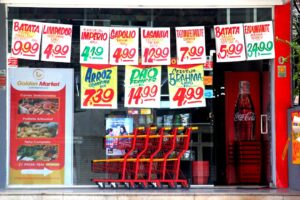Ultimate Guide to Hotel Dynamic Pricing: Strategies & Examples

Discover comprehensive strategies and real-world examples of hotel dynamic pricing to boost your revenue in our ultimate guide.
Introduction to Hotel Dynamic Pricing
In the competitive hospitality industry, pricing strategies play a crucial role in maximizing revenue and maintaining high occupancy rates. Dynamic pricing has emerged as a powerful tool for hotels to adjust room rates in real-time based on various market conditions. This guide delves into the intricacies of hotel dynamic pricing, offering actionable strategies and real-world examples to help hoteliers optimize their pricing models effectively.
What is Hotel Dynamic Pricing?
Dynamic pricing is a pricing strategy where hotels adjust their room rates frequently, often multiple times a day, in response to real-time market conditions. Unlike static pricing, which relies on fixed rates regardless of external factors, dynamic pricing considers supply and demand dynamics, competitor pricing, special events, and other relevant data to set optimal prices that maximize revenue and occupancy.
Static vs. Dynamic Pricing
-
Static Pricing: Involves setting fixed room rates based on traditional factors such as weekday vs. weekend rates and seasonal adjustments. Rates remain unchanged until manually updated, ignoring real-time market fluctuations.
-
Dynamic Pricing: Utilizes real-time data to adjust room rates continuously. This approach allows hotels to respond swiftly to changes in demand, competitor pricing, and other market variables, ensuring prices are always aligned with current market conditions.
Why is Dynamic Pricing Important for Hotels?
Implementing dynamic pricing offers several advantages that can significantly impact a hotel’s profitability and operational efficiency:
Boost Occupancy
By lowering room rates during periods of low demand, hotels can attract more guests and increase occupancy rates. Conversely, raising rates during high-demand periods ensures that rooms are sold at their maximum potential value.
Maximize Profit
Dynamic pricing allows hotels to capitalize on peak demand periods by increasing room rates, thereby enhancing revenue without sacrificing occupancy levels.
Improve Forecasting
Analyzing historical data alongside current market trends enables hotels to predict future demand patterns, allowing for more accurate rate adjustments and strategic planning.
Beat the Competition
Staying ahead of competitors by adjusting prices in real-time ensures that hotels remain competitive and attractive to potential guests.
Understand Traveler Behavior
Monitoring how guests respond to price changes provides valuable insights into booking patterns and preferences, aiding in more targeted marketing and service offerings.
Real-World Dynamic Pricing Examples
Example 1: Event-Driven Pricing
Consider a scenario where a major event, such as a concert or sports final, is scheduled in the city. Hotels can anticipate increased demand and adjust their rates accordingly. For instance, a standard room rate of $200 per night might surge to $300 during the event period, maximizing revenue from visitors attending the event.
Example 2: Last-Minute Booking Discounts
To fill remaining rooms close to the booking date, hotels can offer last-minute discounts. If a hotel has unsold inventory a day before a typical high-demand period, reducing the room rate can attract last-minute bookings, ensuring higher occupancy and revenue.
Example 3: Seasonal Adjustments
During off-peak seasons, hotels can lower their rates to attract more guests. Conversely, in peak tourist seasons, increasing room rates can capitalize on higher demand, boosting overall profitability.
Example 4: Competitor Price Matching
If a nearby hotel reduces its rates, a hotel employing dynamic pricing can respond by adjusting its own prices to remain competitive, thereby retaining its market share and attracting price-sensitive customers.
Implementing Dynamic Pricing Strategies
1. Tracking Occupancy
Monitoring your hotel’s occupancy rates in real-time allows you to adjust prices based on current demand. High occupancy may signal the opportunity to raise rates, while low occupancy may necessitate price reductions to attract more guests.
2. Responding to Abnormal Market Conditions
Unexpected events, such as extreme weather or major local incidents, can impact hotel demand. Dynamic pricing enables hotels to swiftly adjust rates to reflect these changes, either capitalizing on increased demand or mitigating losses during downturns.
3. Creating ‘Peaks’ Outside of Peak Season
Hotels can identify and create demand peaks during traditionally low-demand periods by hosting events or offering special packages, thereby optimizing revenue throughout the year.
4. Learning Guest Segment Patterns
Analyzing booking behaviors of different guest segments helps in tailoring pricing strategies. For example, business travelers may book differently compared to leisure travelers, allowing for more precise rate adjustments.
5. Experimenting with Room Type Preferences
Adjusting prices based on the popularity of specific room types at different times can enhance revenue. For instance, offering discounts on standard rooms during high-demand weekends while maintaining premium rates for suites can balance occupancy and profitability.
Best Practices for Dynamic Pricing in Hotels
Know Your Market Intimately
Understanding the nuances of your local market, including peak seasons, events, and tourist trends, is essential for effective dynamic pricing.
Understand Your Customers Fully
Knowing what your guests value, their booking habits, and preferences allows for more personalized and effective pricing strategies.
Monitor Trends Constantly
Regularly tracking market trends and competitor activities ensures that your pricing remains competitive and aligned with industry standards.
Be Aware of Potential Pitfalls
While dynamic pricing offers numerous benefits, it’s crucial to manage potential risks such as customer confusion and brand perception. Maintaining transparency and ensuring consistent value can mitigate these challenges.
Use the Right Software
Implementing dynamic pricing successfully often requires advanced software solutions that can analyze real-time data and automate price adjustments. Tools like BizPredict offer AI-driven pricing optimization that can seamlessly integrate with your hotel’s management systems, providing intelligent insights and automated rate adjustments.
Conclusion
Hotel dynamic pricing is a powerful strategy that, when implemented correctly, can significantly enhance both occupancy rates and revenue. By leveraging real-time data and adopting best practices, hotels can stay competitive in a rapidly evolving market. Embracing dynamic pricing not only optimizes current performance but also positions your hotel for sustained long-term success.
Unlock the full potential of your hotel’s revenue strategy with advanced AI-driven solutions. Discover how BizPredict can transform your pricing strategy today!




